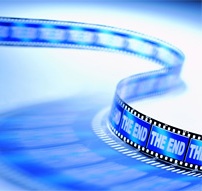If you are unknown «History of stenographer», what «25th frame», You probably know. Both of these things combines the so-called dispersion technique or disguised suggestion. Read more about it in this article.
Content
The most significant contribution to the development of hypnosis Milton Erickson considered its dispersion technique (another name - technique of inserted messages). She really got a big distribution in the future, in search of new ways of advertising, propaganda and other methods of impact on individual and mass consciousness.
It turned out that in the resulting stream, it seems to be incoherent thoughts, free associations, there are words meaningful to understanding the problem of a person, and these significant words man necessarily refers to somehow (by a pause, change of intonation, gestures). From the designated words, you can add a completely connected story about what is the problem in fact. A good investigator knows that it is not necessary to interrupt and stop a person who is enthusiastically lying; let him go to lie - and he will tell you the whole truth.
The idea of Erikson was to use this process in the reverse order: make up the text of the suggestion, and then «dissolve» It in some story of neutral content, denoting subsequently some significant words (constituting the text of suggestion). He was interested in whether the person would subconsciously absorb such disguised suggestions? When experimental verification, it turned out that the technique of the inserted messages is the best trap for consciousness.
The first effective examples of the use of dispersion techniques in medical practice have become a shittomati. They are set out or at least mentioned in each book on Erickson hypnosis called «History about tomatoes» and «Story about stenographer».
Story about stenographer
So, here it is, this famous story about the stenograph in the statement of Erikson.
 «...One of the new stenographs of the department, having a strong prejudice against hypnosis, suffered from cruel attacks of migraine... It was repeatedly examined, but not integued. Usually she was removed into the rest room to «Wipe the headache», What took her at least three hours. But one day, during one of these attacks, the author did not allow her to go to the rest room and persistently suggested to write under dictation. Suppressing indignation, she began to work, but after fifteen minutes the author interrupted, saying with the amazement that the headache passed. She ascribed this to her anger in response to coercion to write under dictation.
«...One of the new stenographs of the department, having a strong prejudice against hypnosis, suffered from cruel attacks of migraine... It was repeatedly examined, but not integued. Usually she was removed into the rest room to «Wipe the headache», What took her at least three hours. But one day, during one of these attacks, the author did not allow her to go to the rest room and persistently suggested to write under dictation. Suppressing indignation, she began to work, but after fifteen minutes the author interrupted, saying with the amazement that the headache passed. She ascribed this to her anger in response to coercion to write under dictation.
Neither she nor others guess what happened actually. The author was then the extensive records of incoherent statements of one psychotic patient. In this work, he helped several different stenographs. By these texts, the author also took advantage of the patient's therapeutic supracity for the patient's speech products, intended for the stenographer suffering from migraine.
When a positive result was received, he tried to use the speech products of another psychotic patient. This experience was also successful. The dictation of ordinary service texts was tricked as a control series of this experiment and «Uncommon» Therapeutic suggestions of incoherent material. No impact on headache was observed. Results did not give and dictation «Sawn» Material performed by other people, as it should be read with an expression to achieve it, emphasizing the right places».
Phenomenon of the 25th frame
One of the brightest pages in the history of the scattering technique was the opening of the sixties in the phenomenon «Phenomenon of the 25th frame». It all started in the framework of an ordinary psychological experiment; Scientists have studied the perception by man of supercratic stimuli.
 A very convenient tool for research was the film projector. . . We know that the frames alternate in the film projector with a frequency of 24 per second create a motion effect, since with this reproduction speed, a number of fixed frames «merges» In one moving image (the gap between frames is not realized).
A very convenient tool for research was the film projector. . . We know that the frames alternate in the film projector with a frequency of 24 per second create a motion effect, since with this reproduction speed, a number of fixed frames «merges» In one moving image (the gap between frames is not realized).
And what happens if the 25th frame will contain information that differs from the one that is contained in the previous twenty-four? In the experiments it turned out that a person does not realize such information, but he remembers her - that is, a person cannot explain where he got this information and why he remembers her.
In the usual cinema there is a regular film. None of the audience knows that in the movie on the screen flashed several times on 1/25 a fraction of a second, two frames - a thirst for a man in the desert and a similar image of some drink. None of them will understand why after the film so I want to wash the throat of this particular drink. And the seller in the kiosk with drinks will only be surprised by the fact that the demand for this drink will increase after the film three times!
At the beginning of the sixties experiments with films, «Sawn» advertising were very popular. But here, one of the UN commissions considered it necessary to ban such a way of advertising as immoral, and the experiments stopped. . . In any case, publications in open scientific press on such experiments ceased.









